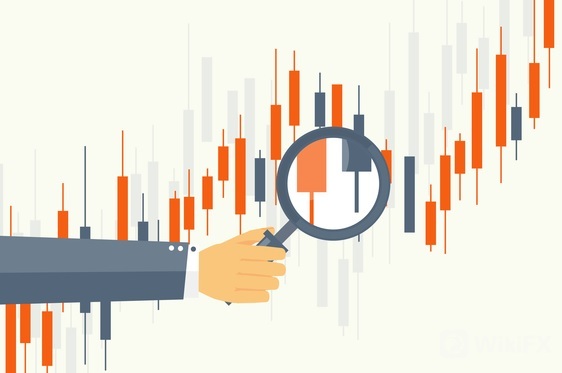
Expert Advisors can be a godsend for Forex traders. Automatically finding new opportunities based on your parameters, emotionless trading, timesaving, back-testing – the benefits speak for themselves.
However, what if the promise of a Forex EA is too good to be true? What if the hours spent carefully crafting an automated version of your own trading strategy ends in an EA that isn't up to scratch? It's often the case that an EA simply isn't good enough, either through inconsistent work performance or perhaps not working at all.
But don't throw the towel in just yet. We've put together 11 tips to transform your EA into the trading maestro you always hoped it would be. And if you're already satisfied with your EAs performance, these tips will help take their output to the next level.
11 Tips To Improve The Performance Of Your Forex Expert Advisor
#1. Taking advantage of market conditions
One of the main reasons some Forex EAs don't work correctly is because they struggle to adapt to dynamic market conditions. Programming your EA to perform in any situation optimally can be a nigh-impossible task. The alternative is to program your EA to work optimally under specific conditions and only use it when those conditions arise.
For example, if the market is trending, you could deploy an EA that's specifically programmed to perform in trending markets. Then if it's a choppy market, you can switch it up and run your range trading EA.
Ranges and trends can last for long periods in forex markets, providing you with an opportunity to take advantage of this with your specially programmed EAs.
#2. Always have an exit plan
Be honest with yourself. Do you have an exit plan ready for when things turn sour? What's your plan if your range trading Forex EA is caught in a breakout? Or if your momentum EA becomes the victim of a short squeeze?
Identifying market conditions is one thing. However, it means nothing if you don't have an appropriate exit plan in place for when the market shifts.
#3. Properly utilising non-correlated EAs
The use of non-correlated Forex EAs cannot be underestimated. By running multiple non-correlated EAs across different strategies and timeframes, you'll have all your bases covered. For example:
-
If you have an EA that works well in the short term, build one that also works on daily charts.
-
If you have an EA that works on majors, program one to work on exotic currency pairs.
Diversifying your EAs will make your trading more robust and will ensure that if one of your EAs isn't optimally performing, you'll have another EA offsetting this.
#4. Allocate funds to your EAs according to performance
How much are you willing to allocate to your best and worst-performing Forex EAs? If you're underfunding your best performing EA, you're doing yourself a great disservice. Vice versa for your worst-performing EA.
#5. Trade less when in a drawdown
It may seem obvious; however, you'd be surprised at the number of forex traders who don't reduce the size of their trades when their Forex EA is experiencing a drawdown.
Spend time analysing your EA, so you know what to expect from it over time. That way, it's easier for you to identify when it's going through a losing period, and you'll be better prepared to cut your trade sizes accordingly.
#6. Trade on a low spread account to reduce costs
Reducing your costs is the quickest and most straightforward way to improve overall returns. Trading on a high spread account can be risky in two ways:
-
High spreads reduce your profits.
-
Overall, you'll experience more losing trades. The wider you spread, the more you get stopped out.
For this reason, you should also consider a low spread with a commission option, which may be better suited for Forex EA trading.
#7. Minimise your MT4/MT5 workspace
Execution can mean the difference between a profitable or losing trade. In the world of trading, milliseconds can have a considerable impact.
One way to boost execution is to minimise the number of windows open in your MT4/MT5 workspace. Small things such as closing the market watch window and other data-heavy applications can make all the difference to execution speed.
#8. Utilise a co-located VPS
In an ideal world, your Forex EA would have zero delays in any of their order executions. You'll be pleased to know that with a co-located virtual private server (VPS), this is a possibility. With a VPS, your EA is installed on a computer in our data centre which you can access via the internet, cutting delays and improving reliability and redundancy compared to running the EA on your own server.
#9. Get familiar with your MAE and MFE
By becoming familiar with your Maximum Adverse Excursion (MAE) and Maximum Forward Excursion (MFE), you'll be better placed to improve the performance of both systems.
For example, your MAE can inform you of how far your trades go into the red before making a recovery. This assists you in optimising your stop-loss placements which will improve the overall risk and reward ratio of your EAs trades. Knowing your MFE has similar benefits. The MFE can show you how much profit your trades are making before they start to reverse.
#10.Use live data to back-test your strategy
Just because your trading system looks good on paper doesn't mean it's going to be effective once it's live. More often than not, it's a result of poor-quality pricing data used in back-testing.
To avoid this downfall, ensure your strategy is tested on the exact data you plan on trading.
#11. Use a scale-in position sizing algorithm
While it can be tempting to spend time improving your entry rules, it's far more lucrative in the long run to focus on position sizing.
In his book, The Definitive Guide to Position Sizing, Van K. Tharp found that scale-on models that follow this approach are one of the best ways to improve the performance of any strategy. Adding scale-in rules to your EA is a quick way to make incremental improvements to your EAs performance.
Final thoughts
Reduce stress and improve the performance of your Forex EAs by following the above tips. Being proactive and appropriately managing your EAs can make all the difference in long-term performance.

Leave a Reply